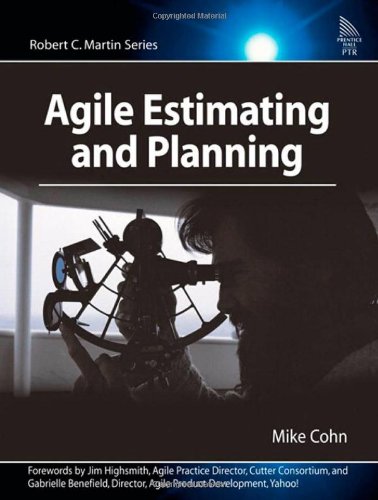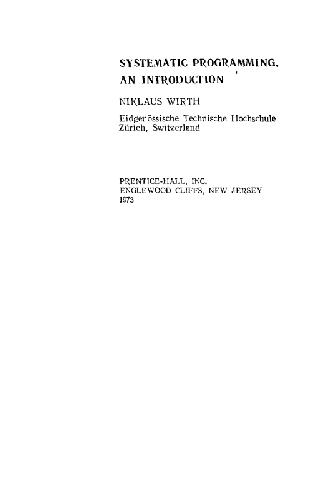Mike Cohn9780131479418, 0131479415
“Traditional, deterministic approaches to planning and estimating simply don’t cut it on the slippery slopes of today’s dynamic, change-driven projects. Mike Cohn’s breakthrough book gives us not only the philosophy, but also the guidelines and a proven set of tools that we need to succeed in planning, estimating, and scheduling projects with a high uncertainty factor. At the same time, the author never loses sight of the need to deliver business value to the customer each step of the way.”
—Doug DeCarlo, author of eXtreme Project Management: Using Leadership, Principles and Tools to Deliver Value in the Face of Volatility (Jossey-Bass, 2004)
“We know how to build predictive plans and manage them. But building plans that only estimate the future and then embrace change, challenge most of our training and skills. In Agile Estimating and Planning, Mike Cohn once again fills a hole in the Agile practices, this time by showing us a workable approach to Agile estimating and planning. Mike delves into the nooks and crannies of the subject and anticipates many of the questions and nuances of this topic. Students of Agile processes will recognize that this book is truly about agility, bridging many of the practices between Scrum and ExtremeProgramming.”
—Ken Schwaber, Scrum evangelist, Agile Alliance cofounder, and signatory to the Agile Manifesto
“In Agile Estimating and Planning, Mike Cohn has, for the first time, brought together most everything that the Agile community has learned about the subject. The book is clear, well organized, and a pleasant and valuable read. It goes into all the necessary detail, and at the same time keeps the reader’s burden low. We can dig in as deeply as we need to, without too much detail before we need it. The book really brings together everything we have learned about Agile estimation and planning over the past decade. It will serve its readers well.”
—Ron Jeffries, www.XProgramming.com, author of Extreme Programming Installed (Addison-Wesley, 2001) and Extreme Programming Adventures in C# (Microsoft Press, 2004)
“Agile Estimating and Planning provides a view of planning that’s balanced between theory and practice, and it is supported by enough concrete experiences to lend it credibility. I particularly like the quote ‘planning is a quest for value.’ It points to a new, more positive attitude toward planning that goes beyond the ‘necessary evil’ view that I sometimes hold.”
—Kent Beck, author of Extreme Programming Explained, Second Edition (Addison-Wesley, 2005)
“Up-front planning is still the most critical part of software development. Agile software development requires Agile planning techniques. This book shows you how to employ Agile planning in a succinct, practical, and easy-to-follow manner.”
—Adam Rogers, Ultimate Software
“Mike does a great follow-up to User Stories Applied by continuing to provide Agile teams with the practical approaches and techniques to increase agility. In this book, Mike provides time-proven and well-tested methods for being successful with the multiple levels of planning and estimating required by Agile. This book is the first to detail the disciplines of Agile estimating and planning, in ways that rival my 1980 civil engineering texts on CPM Planning and Estimating.”
—Ryan Martens, President and Founder, Rally Software Development Corporation
“With insight and clarity, Mike Cohn shows how to effectively produce software of high business value. With Agile estimation and planning, you focus effort where it really counts, and continue to do so as circumstances change.”
—Rick Mugridge, Rimu Research Ltd., and lead author, Fit for Developing Software (Prentice Hall, 2005)
“Finally! The groundbreaking book my clients have been clamoring for! Agile Estimating and Planning demystifies the process of defining, driving, and delivering great software that matters to the business. Mike’s clarity, insight, and experience leap out through every page of this book, offering an approach that is relevant and immediately useful to all members of an Agile project.”
—Kert D. Peterson, President, Enterprise Agile Group, LLC
“This isn’t yet another generic book on Agile software development. Agile Estimating and Planning fills a gap left by most of the other books and gives you important, practical, down-to-earth techniques needed to be successful on Agile development projects.”
—Steve Tockey, Principal Consultant, Construx Software
“Estimation, planning, and tracking is a trinity. If you don’t do one of them, you don’t need the other two. This book provides very practical knowledge for estimation, planning, prioritizing, and tracking. It should be compulsory subject matter for project managers and their teams, even if they hesitate to call themselves Agile.”
—Niels Malotaux, Project Coach
“Effective planning is an important, but often misunderstood, part of any successful Agile project. With Agile Estimating and Planning, Mike Cohn has given us a definitive guide to a wide range of Agile estimating and planning practices. With his clear and practical style, Mike not only explains how to successfully get started planning an Agile project, but also provides a wealth of tips and advice for improving any team’s Agile planning process. This book is a must-read for managers, coaches, and members of Agile teams.”
—Paul Hodgetts, Agile coach and CEO, Agile Logic
“Mike’s writing style captures the essence of agility-just the right amount of information to bring clarity to the reader. This book provides an excellent guide for all Agile practitioners, both seasoned and novice.”
—Robert Holler, President and CEO, VersionOne, LLC
“It is as if Mike took the distilled knowledge regarding planning and estimation of a great Agile developer (which he is) and laid out all he knows in an easily understandable manner. More importantly, he has a great mix of concepts with real-world examples finished off with a case study so the reader can relate the information to their own situation. Unless you are already an expert Agile planner and estimator, this book is for you.”
—Alan Shalloway, CEO, Senior Consultant, Net Objectives, and coauthor of Design Patterns Explained, Second Edition (Addison-Wesley, 2005)
“Although I had plenty of XP experience before trying out Mike Cohn’s Agile planning practices, the effectiveness of the practical and proven techniques in this book blew me away! The book recognizes that people, not tools or processes, produce great software, and that teams benefit most by learning about their project and their product as they go. The examples in the book are concrete, easily grasped, and simply reek of common sense. This book will help teams (whether Agile or not) deliver more value, more often, and have fun doing it! Whether you’re a manager or a programmer, a tester or a CEO, part of an Agile team, or just looking for a way to stamp out chaos and death marches, this book will guide you.”
—Lisa Crispin, coauthor of Testing Extreme Programming (Addison-Wesley, 2003)
“Mike Cohn does an excellent job demonstrating how an Agile approach can address issues of risk and uncertainty in order to provide more meaningful estimates and plans for software projects.”
—Todd Little, Senior Development Manager, Landmark Graphics
“Mike Cohn explains his approach to Agile planning, and shows how ‘critical chain’ thinking can be used to effectively buffer both schedule and features. As with User Stories Applied, this book is easy to read and grounded in real-world experience.”
—Bill Wake, author of Refactoring Workbook (Addison-Wesley, 2003)
“Mike brings this book to life with real-world examples that help reveal how and why an Agile approach works for planning software development projects. This book has great breadth, ranging from the fundamentals of release planning to advanced topics such as financial aspects of prioritization. I can see this book becoming an invaluable aid to Agile project managers, as it provides a wealth of practical tips such as how to set iteration length and boot-strap velocity, and communicate progress.”
—Rachel Davies, Independent Consultant
“There has been a need for a solid, pragmatic book on the long-term vision of an Agile Project for project managers. Agile Estimating and Planning addresses this need. It’s not theory—this book contains project-tested practices that have been used on Agile projects. As Mike’s test subjects, we applied these practices to the development of video games (one of the most unpredictable project environments you can imagine) with success.”
—Clinton Keith, Chief Technical Officer, High Moon Studios
“When I first heard Mike Cohn speak, I was impressed by a rare combination of qualities: deep experience and understanding in modern iterative and Agile methods; a drive to find and validate easy, high-impact solutions beyond the status quo of traditional (usually ineffective) methods; and the passion and clarity of a natural coach. These qualities are evident in this wonderful, practical guide. I estimate you won’t be disappointed in studying and applying his advice.”
—Craig Larman, Chief Scientist, Valtech, and author of Applying UML and Patterns, Third Edition (Prentice Hall, 2005) and Agile and Iterative Development (Addison-Wesley, 2004)
“Agile Estimating and Planning is a critical guide on how to successfully provide value to customers of IT services. This book is filled with clear examples that are essential—from project team…
Table of contents :
The Problem and The Goal……Page 5
The Purpose of Planning……Page 7
Why Do It?……Page 8
What Makes a Good Plan?……Page 12
What Makes Planning Agile?……Page 13
Discussion Questions……Page 14
Why Planning Fails……Page 15
Planning Is By Activity Rather Than Feature……Page 16
Multitasking Causes Further Delays……Page 19
Features Are Not Developed By Priority……Page 20
Estimates Become Commitments……Page 21
Summary……Page 22
Discussion Questions……Page 23
An Agile Approach……Page 25
An Agile Approach To Projects……Page 26
An Agile Approach to Planning……Page 30
Summary……Page 35
Discussion Questions……Page 36
Estimating Size……Page 37
Estimating Size with Story Points……Page 39
Story Points Are Relative……Page 40
Velocity……Page 42
Summary……Page 44
Discussion Questions……Page 45
Estimating In Ideal Days……Page 47
Ideal Time and Software Development……Page 48
Ideal Days As A Measure of Size……Page 49
One Estimate, Not Many……Page 50
Discussion Questions……Page 51
Techniques for Estimating……Page 53
Estimates Are Shared……Page 55
The Estimation Scale……Page 56
Deriving An Estimate……Page 58
Planning Poker……Page 60
Why Planning Poker Works……Page 62
Discussion Questions……Page 63
Introducing the SwimStats Website……Page 65
When Not To Re-Estimate……Page 66
When To Re-Estimate……Page 68
Re-Estimating Partially Completed Stories……Page 69
Discussion Questions……Page 71
Considerations Favoring Story Points……Page 73
Considerations Favoring Ideal Days……Page 76
Recommendation……Page 77
Summary……Page 78
Discussion Questions……Page 79
Planning For Value……Page 81
Prioritizing Themes……Page 83
Factors In Prioritization……Page 84
Combining The Four Factors……Page 89
Some Examples……Page 90
Discussion Questions……Page 92
Financial Prioritization……Page 93
Sources of Return……Page 95
An Example: WebPayroll……Page 97
Financial Measures……Page 103
Comparing Returns……Page 109
Summary……Page 110
Discussion Questions……Page 111
Prioritizing Desirability……Page 113
Kano Model of Customer Satisfaction……Page 114
Relative Weighting: Another Approach……Page 119
Discussion Questions……Page 121
When To Split A User Story……Page 123
Splitting Across Data Boundaries……Page 124
Splitting On Operational Boundaries……Page 126
Removing Cross-Cutting Concerns……Page 127
Split Stories Of Mixed Priority……Page 128
Don’t Split A Story Into Tasks……Page 129
Combining Stories……Page 130
Discussion Questions……Page 131
Scheduling……Page 133
Release Planning Essentials……Page 135
The Release Plan……Page 136
An Example……Page 140
Summary……Page 143
Discussion Questions……Page 144
Iteration Planning……Page 147
Tasks Are Not Allocated During Iteration Planning……Page 149
How Iteration Planning Differs From Release Planning……Page 150
Velocity-Driven Iteration Planning……Page 152
Commitment-Driven Iteration Planning……Page 160
My Recommendation……Page 164
Relating Task Estimates to Story Points……Page 165
Discussion Questions……Page 167
Factors In Selecting An Iteration Length……Page 169
Making A Decision……Page 173
Two Case Studies……Page 175
Summary……Page 176
Discussion Questions……Page 178
Estimating Velocity……Page 179
Use Historical Values……Page 180
Run An Iteration……Page 181
Make a Forecast……Page 183
Which Approach Should I Use?……Page 187
Discussion Questions……Page 188
Buffering Plans for Uncertainty……Page 189
Feature Buffers……Page 190
Schedule Buffers……Page 191
Combining Buffers……Page 199
Some Caveats……Page 201
Discussion Questions……Page 202
Planning the Multi-Team Project……Page 203
Establishing a Common Basis For Estimates……Page 204
Lookahead Planning……Page 205
Incorporating Feeding Buffers Into The Plan……Page 207
But This Is So Much Work……Page 209
Discussion Questions……Page 210
Tracking and Communicating……Page 211
Monitoring The Release Plan……Page 213
Tracking The Release……Page 214
Release Burndown Charts……Page 216
Summary……Page 222
Discussion Questions……Page 223
The Task Board……Page 225
Iteration Burndown Charts……Page 228
Tracking Effort Expended……Page 229
Summary……Page 230
Discussion Questions……Page 231
Communicating About Plans……Page 233
Communicating the Plan……Page 234
Communicating Progress……Page 236
An End of Iteration Summary……Page 238
Metrics……Page 240
Summary……Page 242
Discussion Questions……Page 243
Why Agile Planning Works……Page 245
Re-planning Occurs Frequently……Page 247
Estimates Of Size and Duration Are Separated……Page 248
Plans Are Based On Features, Not Tasks……Page 249
Work In Process Is Eliminated Every Iteration……Page 250
Uncertainty Is Acknowledged And Planned For……Page 251
A Dozen Guidelines for Agile Estimating and Planning……Page 252
Discussion Questions……Page 254
A Case Study……Page 255
A Case Study: Bomb Shelter Studios……Page 257
Day 1-Monday Morning……Page 258
Estimating The User Stories……Page 267
Preparing For Product Research……Page 277
Iteration and Release Planning, Round 1……Page 280
Two Weeks Later……Page 296
Revising The Release Plan……Page 299
Presenting The Revised Plan to Phil……Page 302
Eighteen Weeks Later……Page 306







Reviews
There are no reviews yet.